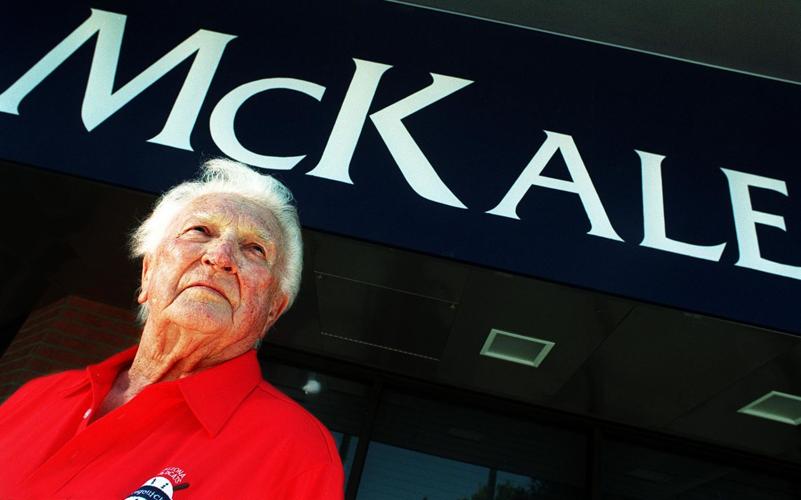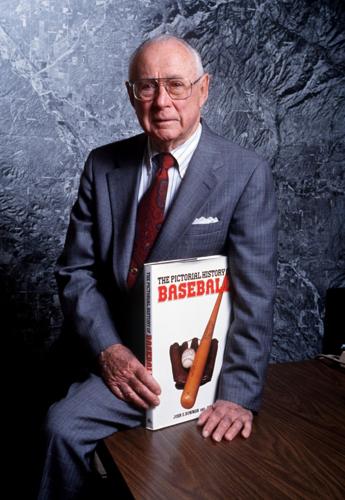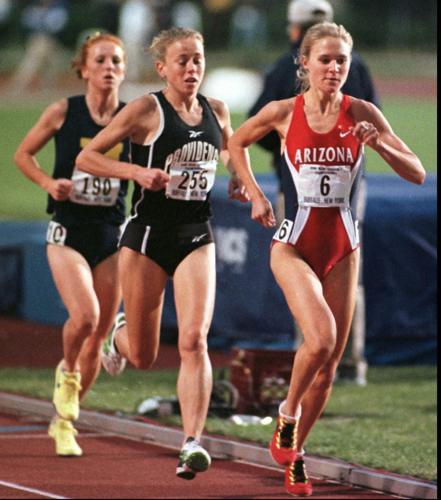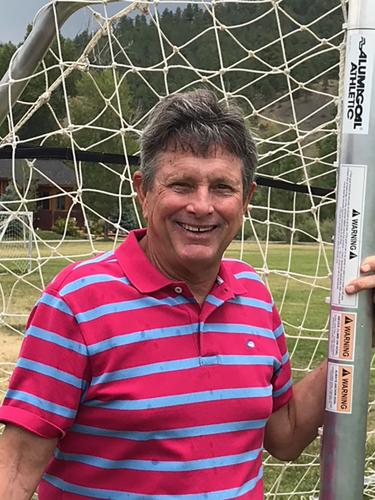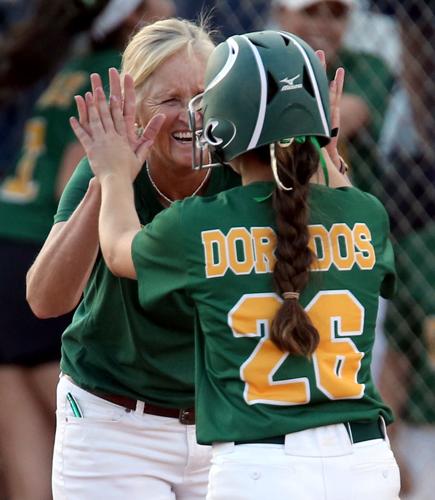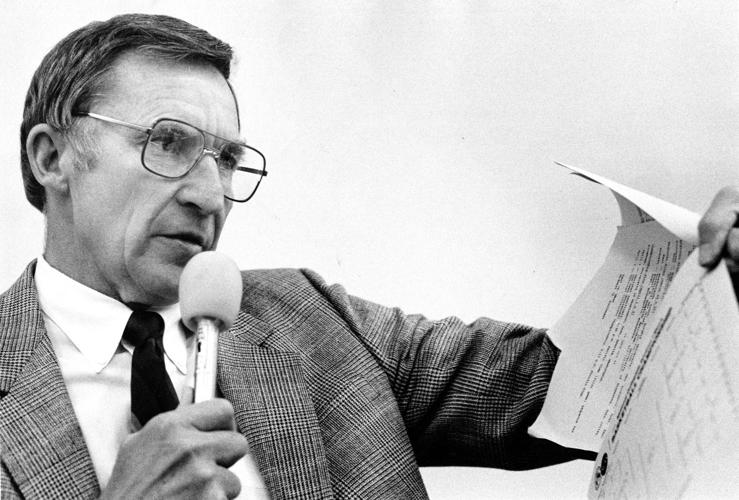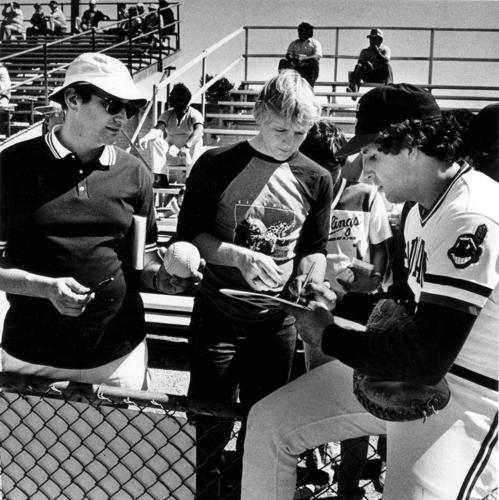The 1990s were the golden age of Tucson sports, a decade stacked with so many superb performances that it’s a challenge to put them in any legitimate order, or narrow a list to five or 10 or even 20 people and teams.
Mike Candrea coached Arizona to five NCAA softball championships. Lute Olson’s Arizona basketball teams won 259 games, five Pac-10 titles and didn’t fail to be ranked as high as No. 6 in the AP poll every year. UA swimmer Ryk Neethling won an inconceivable nine NCAA championships. The Triple-A Tucson Toros won rousing Pacific Coast League championships in 1991 and 1993, Jeff Scurran coached Sabino High School’s football team to three state championships, with an average season record of 12-2. Phil Mickelson won three Tucson Open golf championships.
The list goes on.
Today, in the 10th and final installment of 100 Years of Tucson sports, decade by decade, we select the Difference Maker of each decade, 1920 through 2019. No selection was more difficult than the 1990s, but we decided the best course is to choose “10 Superwomen” of Tucson sports, 1990s, rather than leave out so many.
How’s this for a list of Tucson female super athletes in one 10-year block?
UA golfer Annika Sorenstam won the 1991 NCAA championship, finished second in 1992 and led Arizona to its first-ever NCAA golf title in ’92 as well.

Arizona runner Amy Skieresz set an NCAA and UA record in the 5K in 1998. She won seven national championships.
- UA distance runner Amy Skieresz became the most prolific and successful NCAA female distance runner in history, winning seven national championships.
- Arizona softball players Jenny Dalton, Susie Parra and Nancy Evans all led the Wildcats to national titles and were selected the NCAA player of the year.
- UA swimmer Crissy Ahmann Perham was a 13-time All-American and won two gold medals and a silver medal at the 1992 Barcelona Olympics.
- Sahuaro High School grad Cindy Rarick won two of her five LPGA championships in the ’90s and finished in the top five of three LPGA “majors.”
- UA standout Vicky Maes was a four-time All-American, ranked No. 1 in college tennis periodically and the 1996 Pac-10 player of the year.
- UA golfer Marisa Baena, a three-time All-American, made the most famous shot in women’s college golf history, an eagle from 145 yards out in a sudden death playoff to give Arizona the 1997 national title and herself the individual championship.
- UA high jumper Tanya Hughes, an NCAA indoor and outdoor champion, clearing a college record 6 feet 4 1/2 inches, was named the NCAA Woman of the Year.
Can any city surpass the athletic accomplishments of those Superwomen in one decade? Unlikely.
Here are our difference-makers, decade by decade:
1920s
A.L. Slonaker was the UA’s first dominating male athlete, a 13-time letterman in football, basketball and baseball and one of America’s leading quarterbacks of 1921. He averaged 23.7 points per game during the 1920-21 basketball season, a UA record that stood until 1973. After his graduation in 1922, Slonaker became the UA’s athletic business manager, a driving force in the construction of Arizona Stadium, 1929, and Bear Down Gym, 1926.
1930s
Joe Batiste. Tucson had a segregated school system when Batiste, almost surely the leading track and field athlete in Tucson history, left all-Black Dunbar Junior High to enroll at Tucson High in 1936. By the time he graduated, Batiste was regarded as America’s top hurdler, setting a national record in the 120 high hurdles, and touring Europe with Team USA in 1938. Upon Batiste’s return to Tucson, he was celebrated in a parade in downtown Tucson. His potential Olympic career was scuttled by World War II.

Roy Drachman was one of the prime movers in getting the Indians to come to Tucson for spring training.
1940s
Roy Drachman. Along with Hi Corbett, Drachman was most responsible for the Cleveland Indians choosing Tucson as a spring training headquarters in 1947, triggering more than 60 years of spring training in Tucson. A former UA baseball standout, Drachman was then the founding father of the Tucson Conquistadores in 1962, the group that has staged more than 50 PGA and LPGA golf events in Tucson. His legacy was felt in 1998 when he threw out the first pitch at the Diamondbacks’ first-ever spring training game.
1950s
Jack Lee. The UA’s band and music director for more than a quarter-century, Lee is probably most known for leading the UA Matching Band in Super Bowl I. But historically, Lee is celebrated for writing the UA’s fight song, “Bear Down, Arizona,” in 1952. He was inspired to write the song as he flew into Tucson for a job interview, spotting the school motto “BEAR DOWN” on the roof of Bear Down Gym.
1960s
Dick Clausen. In 13 years as Arizona athletic director, Clausen not only was the force behind getting McKale Center built — and getting Arizona out of the small-time Border Conference as he helped to create the more upscale Western Athletic Conference. In 1969, Clausen hired Compton, California, high school track legend Willie Williams, a Black man, to be the first Black head coach in the WAC and among the first in any sport in the NCAA.

Ron Hassey, catcher for the Cleveland Indians, signs autographs for fans at Hi Corbett Field prior to a 1983 spring training game.
1970s
Ron Hassey. The two leading teams in Tucson sports, 1970-79, both featured Hassey. He was the city’s player of the year in 1972 as Tucson High went 25-0, considered the best high school baseball team in Tucson history. He hit .484 that season. Hassey then played four seasons at Arizona, switching from shortstop and third base to catcher as Arizona won the 1976 College World Series as Hassey drove in 84 runs, which remains second in school history to Hassey’s 86 RBIs in 1974.

Cedric Dempsey was athletic director at UA in the 1980s.
1980s
Cedric Dempsey. The architect of Arizona’s rise to its golden era of the ’90s was Dempsey, a former UA assistant basketball coach and assistant athletic director in the 1960s. Dempsey’s gift for hiring UA Hall of Fame coaches is unsurpassed: he approved the hiring of Olson, Dick Tomey, Frank Busch and Candrea, as well as eliminating an enormous athletic department debt he inherited in 1983.
1990s
Ten Superwomen. Also deserving of being on the Superwoman list is Adia Barnes, who led Arizona to three NCAA basketball tournaments and is the only women’s player in school history to score 2,000 points.

Canyon del Oro High School coach Kelly Fowler congratulates Hope Banales after her lead-off triple against Salpointe Catholic in a Class 4A state softball semifinal at Hillenbrand Stadium in 2017.
2000s
Kelly Fowler. Youth softball emerged as one of Tucson’s most successful enterprises in the 2000s, and Fowler coached Canyon del Oro High School to the 2005 state championship at the same time she and her husband, Lance, created Desert Thunder’s AAU travel-ball organization, which became a national power and developed more than 20 Division I college players. Fowler’s daughters, Kenzie and Mattie, led CDO to four state championships. They’re considered by some to be the two leading high school softball players in Tucson history.

Ted Schmidt has been a vital part of youth soccer for decades.
2010s
Ted Schmidt. Once the president of the Canyon View Little League and later the president of the National Football Foundation and College Football Hall of Fame’s Southern Arizona chapter, Schmidt, a Tucson attorney, has made his largest contribution to Tucson sports in youth soccer. He was simultaneously the president of the Pima County Junior Soccer League and president of the FC Tucson Youth Soccer association, which helps to develop more than 3,000 young soccer players each year. He is also the man behind the 4,000-square-foot “Kickin’ It” clubhouse at the FC Tucson Youth Soccer property.


